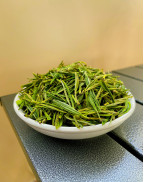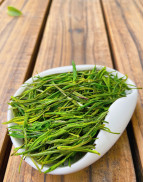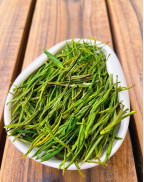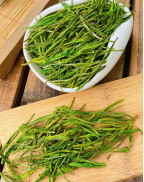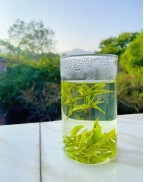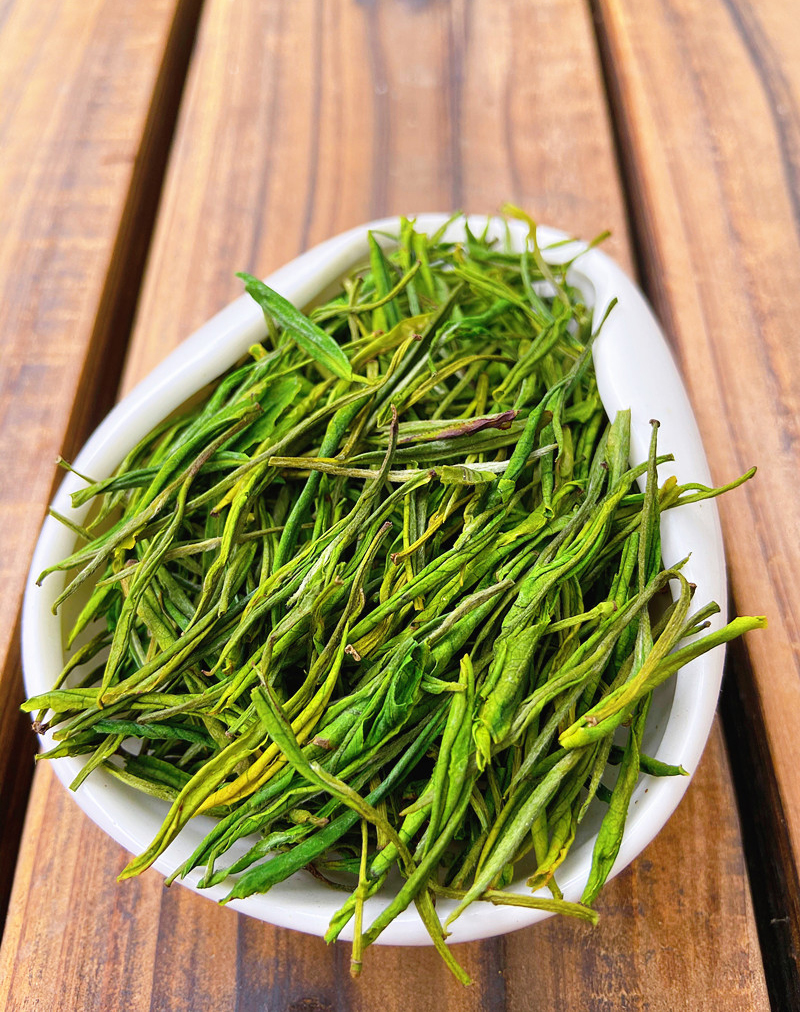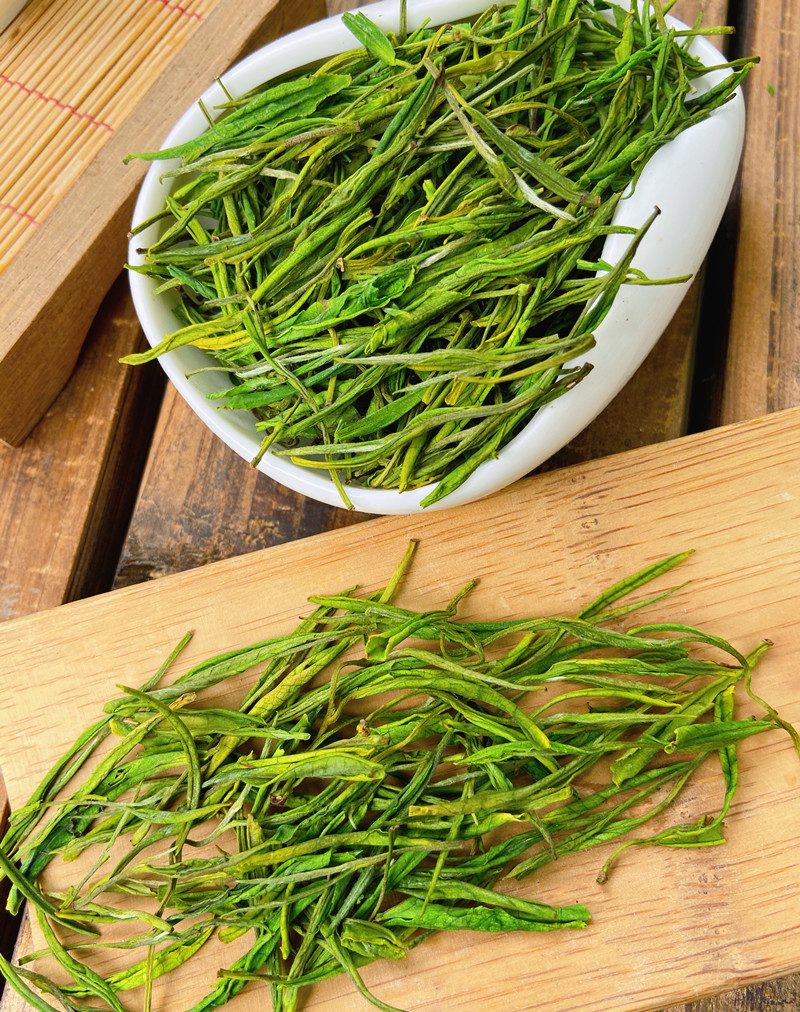An Ji Bai Cha Green Tea
- Product Code: Simple
- Availability: In Stock
Basic Info
Name: Anji Bai Cha Green Tea
Origin: Anji County, Huzhou City, Zhejiang Province
Taste & Aroma: Herbaceous,refreshingly delicate and soothing, lightly vegetal and grassy, sweetness without astringency or bitterness
Item Form: Loose leaves
Ingredients: Freshly picked buds and leaves
Caffeine: Low
Liquor: Bright, clear, with a light yellow-green colour
Dry Leaf: Green, long, thin and very fine
Harvest Period: March 26, 2024 (First Flush)
Season: Spring tea
Storage: Stored in cool, airtight, opaque containers - refrigeration is recommended.
Shelf Life: 10 months at room temperature / 18 months with low temperature storage
Flavor: Unflavored
Sourcing : Teapooo
An Ji Bai Cha Green Tea
An Ji Bai Cha Green Tea, also known as Anji White Tea, is a type of green tea that is grown and produced in Anji County, located in the Zhejiang province of China. This tea is known for its delicate flavor, light color, and high quality, and is considered one of the finest green teas in China.
As early as 1930, dozens of wild white tea trees were discovered in Xiaofeng town, Anji county. Since then, no one has discovered these trees. It was not until 1982 that a white tea tree over 100 years old was found on the 800-meter-high mountain in Daxi village. The young leaves were pure white, and only the main veins were slightly green. Later, the "Baiye No.1" variety was bred.

The Geographical Location of Zhejiang Province
Show Full Description
As early as 1930, dozens of wild white tea trees were discovered in Xiaofeng town, Anji county. Since then, no one has discovered these trees. It was not until 1982 that a white tea tree with a history of more than 100 years was discovered on the mountain 800 meters away from Daxi Village. The young leaves of this tree are pure white, only the main vein was slightly green, and rarely seeds are formed. After that, the "Baiye No.1" was bred.
The leaves of the tea tree used to make An Ji Bai Cha Green Tea have a distinct white appearance during the picking and production process, which is different from other greens. Actually, Anji Bai Cha is the first albino tea known so far.
An Ji Bai Cha Green Tea is often mistaken as a kind of white tea by consumers because "Bai Cha (白茶)" means "white tea" in Chinese. In fact, "Bai Cha (白茶)" here mainly describes the appearance of the leaf of the tea plant rather than the tea type.
Growing environment
Anji county belongs to subtropical maritime monsoon climate, with abundant sunshine, mild climate and abundant rainfall, and distinct seasons throughout the year. These natural conditions are suitable for the growth of crops. The annual rainfall of the county is 2003.4 mm, the annual sunshine hours are 1762.5 hours and the annual average temperature is 17.0 degrees Celsius.

An Ji Baicha Tea Garden
The characteristics of An Ji Bai Cha Green Tea
1. High in ammonia and low in phenol.An Ji Bai Cha Green Tea has an amino acid content of up to 10.6%. It is more than 2 times that of ordinary green tea, and its tea polyphenol content is 10-14%. Therefore, in terms of taste, So in terms of taste,An Ji Bai Cha Green Tea tastes very good, not bitter or astringent, and has a delicate fragrance and clear note.
Chlorophyll deficiency is the cause of a genetic variant of An Ji Bai Cha Green Tea.

Close-up of An Ji Bai Cha Green Tea bud
2. Due to the specific metabolic function of An Ji Bai Cha Green Tea, it inhibits the synthesis of chlorophyll at low temperature and significantly increases the production of high amino acids. Among them, the amino acids of tea account for 60% of the total amino acids. The amino acids in this tea are the characteristic component of tea. Up to now, it has not been found in other animals and plants except white tea. It can be seen that An Ji Bai Cha Green Tea is a treasure among green teas. In the winter in An Ji, the low temperature of -8℃--10℃ is maintained for more than 20 days, which leads to the lack of chlorophyll in An Ji Bai Cha Green Tea.
The picking time of An Ji Bai Cha Green Tea is determined according to the temperature, because An Ji Bai Cha Green Tea has a whitening process. When the temperature reaches a certain value, the whitening effect is the best and the content of amino acid is the highest. At this time, the quality of An Ji Bai Cha Green Tea is the best. An Ji Bai Cha Green Tea is only picked once a year, and the picking period is about 20 days. However, some other teas may be picked many times according to the season temperature . So this also leads to the low quantity of An Ji Bai Cha Green Tea. The average yield per mu(0.0667 hectares) is about 10kg.

An Ji Bai Cha Green Tea in a glass cup
Anji Bai Cha is known for its delicate flavor, which is characterized by its light, slightly sweet taste and clean finish. This flavor profile is due to the unique growing conditions in Anji County, which include high elevation, abundant rainfall, and rich soil. The tea leaves are also grown using traditional methods, which help to preserve their natural flavor and aroma.
An obvious appearance feature of Anji Bai Cha is that its leaves are white, but its veins are green.
The process of making Anji Bai Cha involves several steps:
Harvesting: The leaves of the tea plant are hand-picked in the spring when they are at their freshest and most flavorful.
Withering: The harvested leaves are then withered to reduce their moisture content and prepare them for the next steps in the process.
Kill-green/Steaming: The withered leaves are then steamed to stop the oxidation process and preserve their freshness.
Drying: After steaming, the tea leaves are dried to remove any remaining moisture.
Packaging: The dried tea leaves are then packaged in airtight containers to preserve their quality and flavor.
Overall, Anji white tea is a unique and delicious variety of tea that is well worth trying if you have the opportunity.
| Chinese Gongfu Method | |
| Tea | 3g |
| Water | 90ml / 3oz |
| Time | 4 Infusions (5s, 10s, 15s ,20s, 40s) |
| Temperature | 80ºC /176ºF |
| Teapot Method | |
| Tea | 5g |
| Water | 300ml / 10oz |
| Time | 3 - 5 mins |
| Temperature | 80ºC /176ºF |



